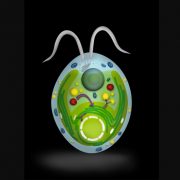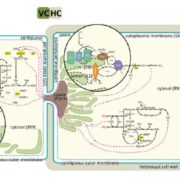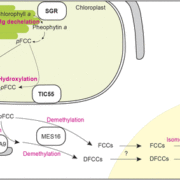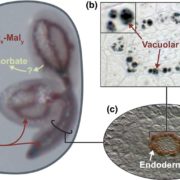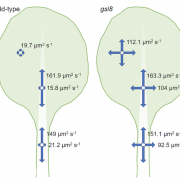Phloem loading through plasmodesmata: a biophysical analysis
 Sugars produced in photosynthetically active mesophyll cells move into the phloem through a process known as phloem loading, but not all plants phloem load the same way. Some use a passive process in which sugars move down a concentration gradient into the phloem, but others use active transport processes. Some species use a “polymer trap” strategy, in which sugars move passively and symplastically (through plasmodesmata) into the phloem where they are converted into oligosaccharides (RFOs, raffinose-family oligosachharides). In this work, Comtet et al. develop a kinetic model to better understand the physical and chemical mechanisms as well as selective advantages of plasmodesmatal transport and polymer trapping. Their model supports the interpretation that polymer trapping can provide reasonable sucrose export rates in plants with the specialized plasmodesmata found in these species, and it provides the opportunity to explore novel approaches to increase photosynthetic efficiency through enhanced phloem loading. Plant Physiol. 10.1104/pp.16.01041
Sugars produced in photosynthetically active mesophyll cells move into the phloem through a process known as phloem loading, but not all plants phloem load the same way. Some use a passive process in which sugars move down a concentration gradient into the phloem, but others use active transport processes. Some species use a “polymer trap” strategy, in which sugars move passively and symplastically (through plasmodesmata) into the phloem where they are converted into oligosaccharides (RFOs, raffinose-family oligosachharides). In this work, Comtet et al. develop a kinetic model to better understand the physical and chemical mechanisms as well as selective advantages of plasmodesmatal transport and polymer trapping. Their model supports the interpretation that polymer trapping can provide reasonable sucrose export rates in plants with the specialized plasmodesmata found in these species, and it provides the opportunity to explore novel approaches to increase photosynthetic efficiency through enhanced phloem loading. Plant Physiol. 10.1104/pp.16.01041


